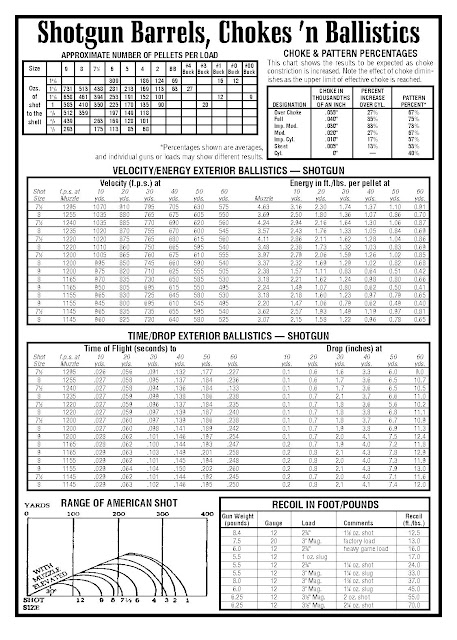Bird shot can travel hundreds of yards, even up to half a mile in some cases. This article dives deep into bird shot range, birdshot lethality, and the critical aspects of safety concerning birdshot distance. It’s essential to know the birdshot pellet velocity, birdshot effectiveness, birdshot pattern spread, and birdshot penetration characteristics to ensure responsible firearm use. This knowledge directly impacts birdshot maximum effective range, birdshot hunting distance, and especially birdshot safety distance.

Image Source: lh4.googleusercontent.com
Grasping Bird Shot Basics
Bird shot is a type of shotgun ammunition filled with many small, spherical pellets. It’s primarily designed for hunting birds and small game. Unlike slugs, which are single projectiles, bird shot spreads out after leaving the barrel, creating a pattern of impact points. The size and number of pellets can vary significantly, impacting its range and effectiveness. Understanding these basics is critical for responsible gun ownership and safe hunting practices.
What is Bird Shot?
Bird shot refers to shotgun shells loaded with multiple small, round pellets. These pellets are usually made of lead, steel, or other non-toxic materials. The size of the pellets is designated by numbers, with larger numbers (e.g., #8, #9) indicating smaller pellets and smaller numbers (e.g., #4, #6) indicating larger pellets. The choice of bird shot size depends on the game being hunted and the desired range and pattern density.
Bird Shot Types
- Lead: Traditional and highly effective, but restricted in many areas due to environmental concerns.
- Steel: A common non-toxic alternative to lead, often required for waterfowl hunting. Steel shot is lighter than lead, resulting in faster pellet velocity but potentially less downrange energy.
- Bismuth: Another non-toxic option, offering similar density to lead and better ballistic performance than steel. It’s generally more expensive than steel.
- Tungsten: One of the densest non-toxic materials, providing excellent downrange energy and penetration. Tungsten shot is also typically the most expensive option.
Factors Influencing Bird Shot Range
Many factors determine how far bird shot can travel. These factors include pellet size, velocity, and weather conditions. It’s important to consider these elements when using bird shot to ensure safety.
Pellet Size and Density
Larger pellets retain their energy and velocity better than smaller pellets, allowing them to travel farther and hit harder. Denser materials like lead and tungsten offer better penetration and longer range compared to lighter materials like steel.
Initial Velocity
The initial velocity of the pellets plays a crucial role in the birdshot distance. Higher velocity generally means greater range, but it can also affect the pattern spread. The trade-off between velocity and pattern density should be considered based on the intended use.
Environmental Conditions
Weather conditions like wind, humidity, and temperature can affect bird shot range. Wind can cause pellets to drift off course, reducing accuracy and effective range. High humidity can increase air resistance, slowing the pellets down.
Bird Shot Distance: Examining the Numbers
While bird shot can travel a significant distance, its effectiveness diminishes rapidly with range. Let’s look at some specific distances and the likely effects.
Maximum Range
Bird shot can travel up to 500 yards or more. However, at these extreme distances, the pellets have very little energy and pose minimal risk of serious injury. The main concern at these ranges is the potential for eye injuries if someone is struck by a pellet.
Maximum Effective Range
The birdshot maximum effective range is the distance at which bird shot can reliably deliver enough energy to ethically and effectively kill the intended target. For most bird hunting, this range is between 25 and 40 yards. Beyond this distance, the pattern becomes too sparse, and the pellets lose too much energy to ensure a clean kill.
Birdshot Hunting Distance
Responsible birdshot hunting distance falls well within the maximum effective range. Hunters should aim for shots within 25-40 yards to ensure ethical and effective kills. Practicing at different ranges is essential to judge distances accurately and understand how the pattern spreads.
Birdshot Lethality and Penetration
While bird shot is designed for small game, it can still be lethal at closer ranges. The birdshot lethality depends on several factors, including pellet size, velocity, and the area of the body struck.
Penetration Depth
Birdshot penetration depends on the pellet size, velocity, and the material it’s striking. Smaller pellets have limited penetration, while larger pellets can penetrate deeper into tissue. Testing penetration on various materials can provide a better understanding of birdshot’s capabilities at different ranges.
Risk of Injury
At close range, bird shot can cause serious injuries, including deep puncture wounds, eye injuries, and even death. As the range increases, the risk of serious injury decreases, but the potential for minor injuries remains. It’s important to always treat firearms with respect and follow all safety rules.
Birdshot Pattern Spread
The birdshot pattern spread is the area covered by the pellets as they travel away from the shotgun. The pattern spread is affected by several factors, including the choke of the shotgun, the type of ammunition, and the range.
Choke Selection
The choke is a constriction at the end of the shotgun barrel that controls the pattern spread. Tighter chokes produce denser patterns at longer ranges, while more open chokes produce wider patterns at shorter ranges. Choosing the right choke is essential for achieving the desired pattern density at the intended range.
Pattern Density
Pattern density refers to the number of pellets within a given area of the pattern. A dense pattern is necessary for ensuring a high probability of hitting the target. The pattern should be dense enough to ensure multiple pellets strike the target, delivering sufficient energy for a clean kill.
Birdshot Safety Distance: Essential Guidelines
Understanding birdshot safety distance is crucial for preventing accidents and injuries. Always be aware of your surroundings and follow these essential guidelines.
Safe Shooting Practices
- Always identify your target and what is beyond it: Before taking a shot, be certain of your target and ensure there are no people, animals, or objects in the line of fire or beyond.
- Never shoot at the sky: Pellets fired into the air can travel a long distance and pose a risk to people and property.
- Wear appropriate safety gear: Always wear eye and ear protection when shooting.
- Store firearms securely: Store firearms unloaded and in a secure location, out of reach of children and unauthorized individuals.
Considerations for Different Environments
- Rural Areas: Even in rural areas, be aware of houses, roads, and livestock that may be within range.
- Urban Areas: Discharging firearms within urban areas is generally prohibited due to safety concerns.
- Hunting Areas: Follow all hunting regulations and be aware of other hunters in the area.
FAQ: Common Questions About Bird Shot Range and Safety
Here are some frequently asked questions about bird shot range, safety, and effectiveness.
What is the maximum distance bird shot can travel?
Bird shot can travel up to 500 yards or more. However, its effectiveness at these distances is minimal.
Can I use bird shot for self-defense?
While bird shot can be lethal at close range, it is generally not recommended for self-defense due to its limited penetration and potential for over-penetration in close quarters. Other types of ammunition, such as buckshot, are more commonly used for self-defense.
What is the best bird shot size for hunting quail?
How does choke affect bird shot range?
Tighter chokes increase the effective range of bird shot by producing denser patterns at longer distances. More open chokes decrease the effective range but provide wider patterns at shorter distances.
What is the safe distance to be from someone shooting bird shot?
The safe distance depends on the environment and the type of ammunition being used. As a general rule, it’s best to stay at least 100 yards away from someone shooting bird shot.
Who is responsible for ensuring safety when using bird shot?
The shooter is ultimately responsible for ensuring safety when using bird shot. This includes following all safety rules, identifying the target and what is beyond it, and being aware of the surroundings.
What happens if bird shot hits someone at a long range?
At long ranges, bird shot pellets lose much of their energy. A pellet striking someone would likely cause only minor injuries like welts or skin abrasions. However, even at long range, the possibility of eye injury remains a concern.
Responsible Bird Shot Use: A Summary
Bird shot is a versatile type of ammunition, but it’s crucial to understand its limitations and potential risks. Always prioritize safety by following established guidelines, being aware of your surroundings, and using appropriate safety gear. By understanding bird shot range, birdshot lethality, birdshot effectiveness, and birdshot safety distance, you can ensure responsible and ethical firearm use. Remember that knowing the birdshot pellet velocity, birdshot pattern spread, birdshot penetration, birdshot maximum effective range, and birdshot hunting distance will help you make informed decisions when handling firearms.

Hi, I’m Candace Wafford, a travel and food blogger based in Lexington, Kentucky. As a corporate traveler, I’ve had the chance to explore a lot of places, but now I’m on a mission to travel full-time. My goal? To figure out how to take my cat along for the adventure! Here at destinationdorworth.com, I share my experiences and tips on outdoor activities, travel, and of course, the best food spots I come across. I hope my blog inspires you to explore more and eat well on your journeys!
